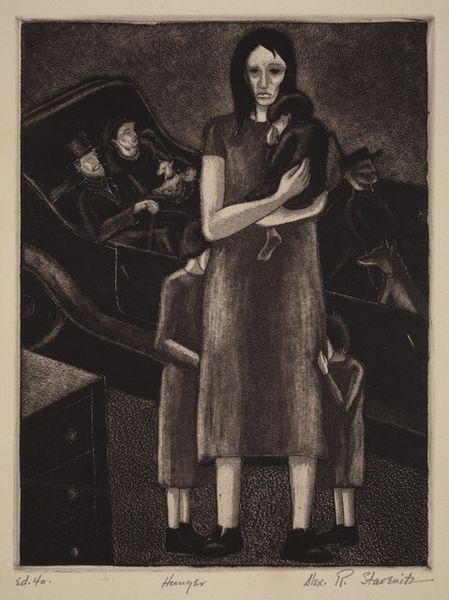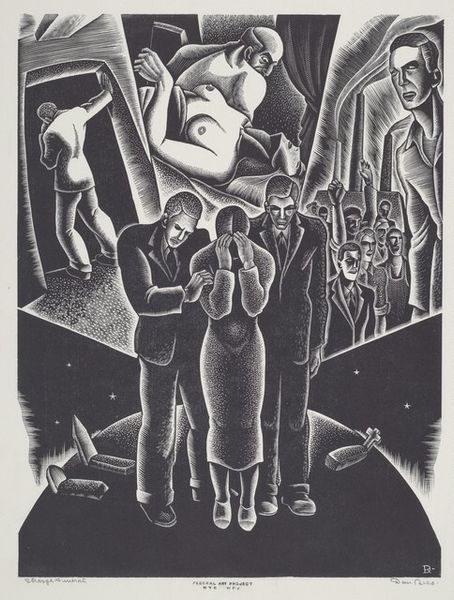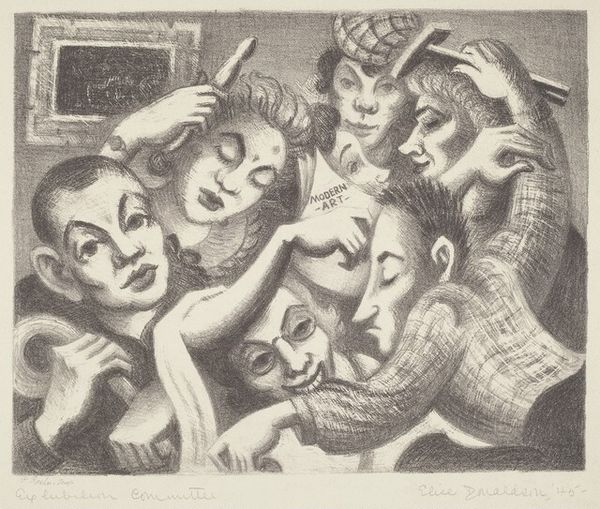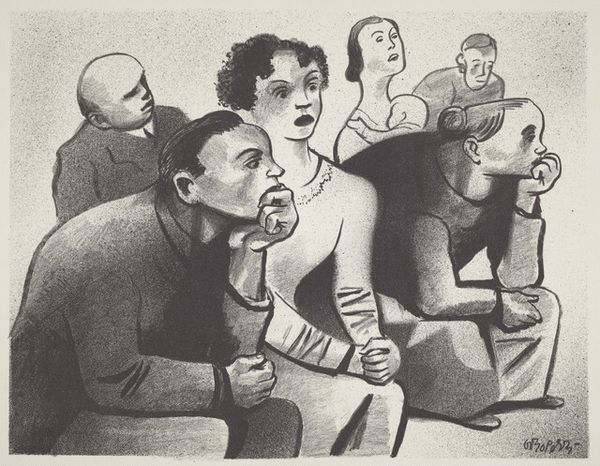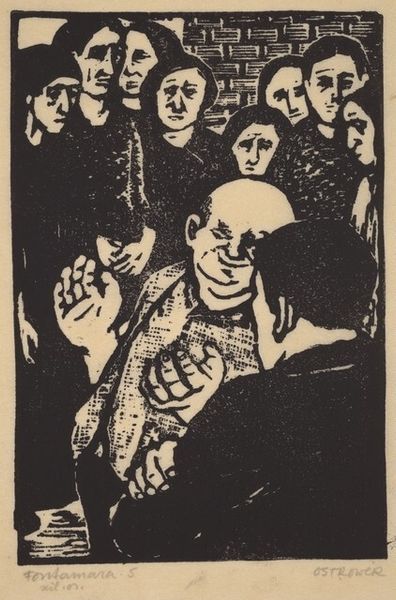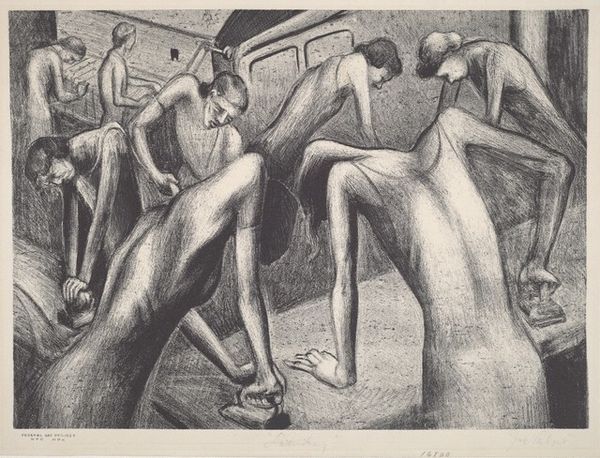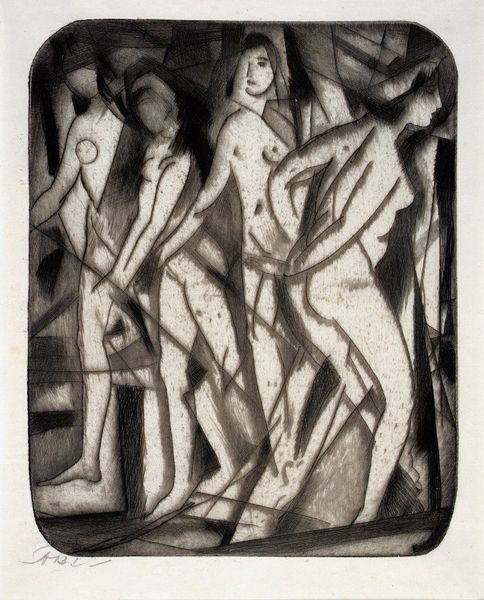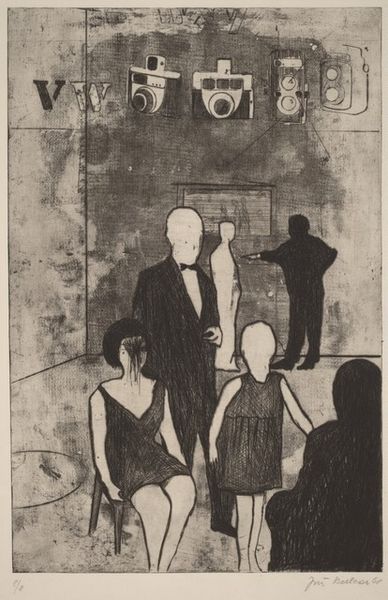
drawing, charcoal
#
portrait
#
drawing
#
caricature
#
caricature
#
charcoal drawing
#
figuration
#
abstract
#
group-portraits
#
expressionism
#
portrait drawing
#
charcoal
Copyright: Public Domain: Artvee
Editor: So, this is Karl Wiener’s charcoal drawing "Werbung," from around 1929. It’s quite striking, almost unsettling. There's a woman in the center surrounded by these distorted faces. How do you interpret this work in the context of its time? Curator: It’s essential to consider the socio-political atmosphere of late Weimar Germany. Wiener, influenced by Expressionism, likely critiques the seductive and manipulative nature of propaganda. These figures seem almost like puppets, their expressions blank, easily swayed. How do you see the woman's role in all of this? Is she the "Werbung" itself – the advertisement? Editor: That's interesting! I hadn't considered her as the "advertisement." She definitely stands out with her confident pose compared to the other figures. It’s as if she’s the product being sold to these somewhat grotesque consumers. Curator: Precisely. Think about the rise of mass media, advertising, and political rhetoric during that period. Artists became increasingly aware, and critical, of its power to shape public opinion. Notice how the faces lack individuality; they are a faceless crowd being molded by outside forces. Is there any tension there for you? Editor: I definitely sense that tension! There’s a real contrast between the central figure and the surrounding crowd; between individuality and the collective. The work evokes a sense of unease and the potential for manipulation, which still resonates today. Curator: Yes, and that's what makes it a powerful commentary. Wiener reveals the insidious way societal narratives are constructed and how easily individuals can become instruments in that process. So what's your feeling about the institutional role this work has today, sitting in a museum? Editor: That's thought provoking. It now functions almost as a historical artifact of those propaganda machines, but can be seen as commentary on modern image-making as well. This conversation makes me appreciate Wiener’s critical eye and the importance of questioning the messages we consume. Curator: Agreed. Understanding the historical context helps us recognize that art often reflects and responds to societal forces. It's been valuable seeing how this piece challenges our contemporary values as well!
Comments
No comments
Be the first to comment and join the conversation on the ultimate creative platform.


